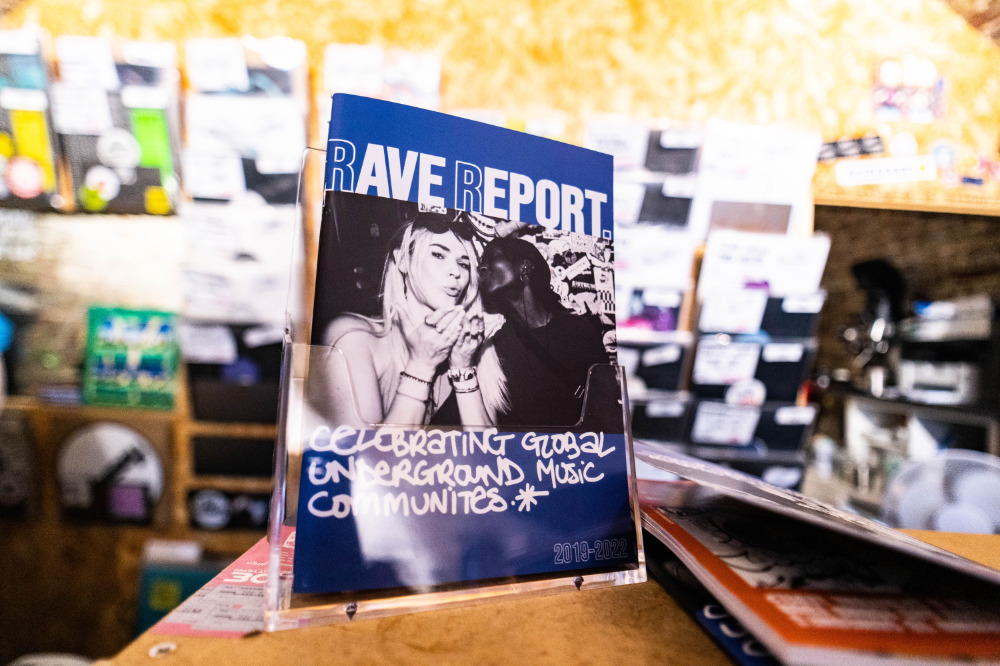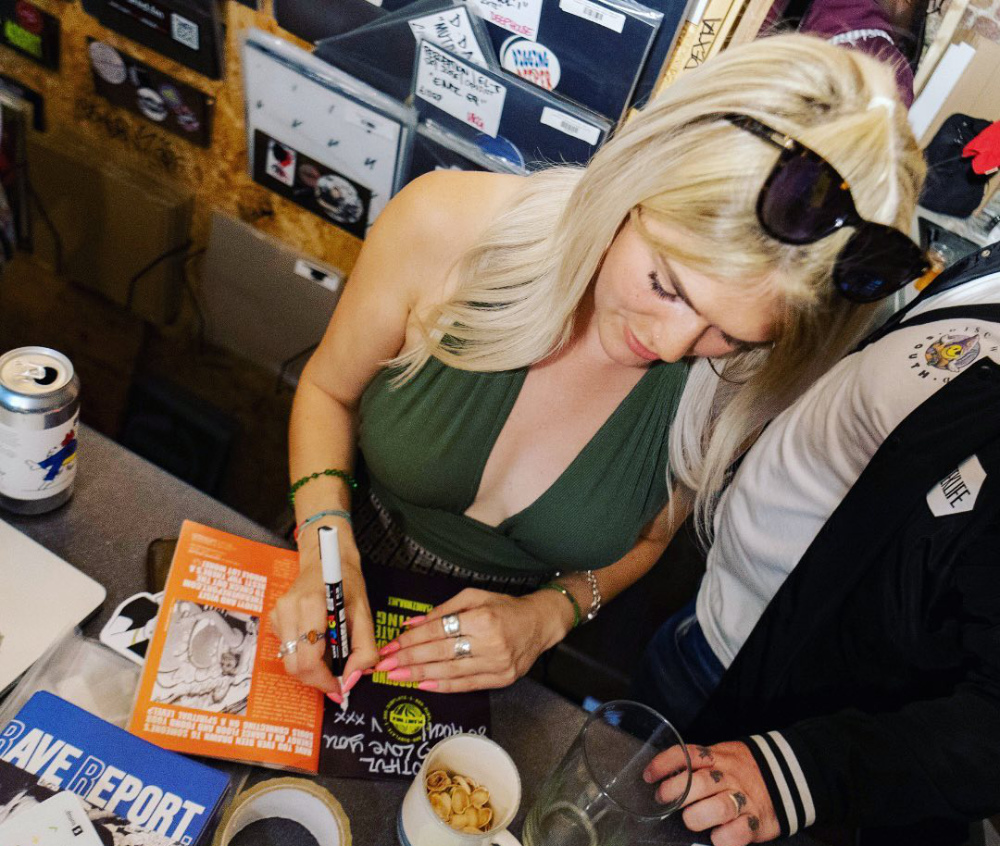Zine culture currently seems to be going through something of a renaissance with new zines popping up regularly. In the first of a new series where we profile grassroots dance music zines, we check out Rave Report.
Verity Raphael has spent the last few years running Rave Report, a blog where she documents global underground dance music culture. Rave Report recently turned three and to mark the occasion Verity published her best interviews as a physical zine.
Emily Thomas caught up with Verity to chat about Rave Report’s ethos, the importance of documenting global grassroots communities and the diverse communities and music styles included in the zine.
Can you explain what Rave Report is all about?
I started Rave Report to credit and document the roots, exportations and diasporas of the underground music genres I love so much.
My inspiration initially came from people I’d met on dancefloors – specifically Techno ravers from Mumbai (Ronak and Ria) and a Jazz lover from Saudi Arabia (Tima).
I’m proud to say my first ever feature was about South African Gqom with the ‘Mother of Afro Rave’ herself, Toya Delazy!.
You’ve written about such diverse communities and music styles. How did you go about finding local communities to write about?
It’s an organic process. Once at a house party I met a raver from Guam, an island between Japan and Australia. We did an interviewoff the cuff at 6 am!
Other times I’ll do my research and reach out to people: that’s how I foundKaza the Industrial Techno DJ from Cambodia or Felipe Maia, the Brazilian Baile Funk journalist.
Then other times, people reach out to me! Like when I got a DM from Philip Koth in Nairobi, asking for coverage on Kenyan Drill artists the Buruklyn Boyz.
How does the interview process work?
I love to immerse myself in whatever culture I’m looking to report on, by watching documentaries, reading articles and listening to the local sounds. Then I’ll send some loose talking points prior to the interview, so the conversation can flow.
Each interview is completely different: some people are more protective over their words than others, which is understandable when you’re representing your country and your community.
The format works really well, as zines are so often linked with grassroots communities and tend to highlight personal perspectives. It’s like your form reflects your practice. Could you tell us a little bit about why you decided to launch a physical mag and what makes it different from the digital version?
Thank you! It was all thanks to Chris Dexta (Planet Wax/Diffrent Music) and David Stretch (AKO Beatz). I’m lucky to be surrounded by amazing friends like these two, who are established in the scene and act as mentors. We all love to encourage and support each other.
Both Dexta and Stretch called me separately and told me I should put my work into a physical format. I’ve done 70 articles since 2019 and September 2022 was Rave Report’s three-year anniversary, so it made sense to print the zine to celebrate!
Dexta designed the zine, helped me promote the launch, let me host it at his store and DJed at my event.
Stretch sponsored Dexta’s design work, played at my event and surprised me with Rave Report branded merch. I’ve done a lot of work reporting on their labels and projects, but I never expected to get so much love in return from them – and the rest of our community.
 The launch party was at Planet Wax. I was really keen to go but couldn’t make it! How was it?
The launch party was at Planet Wax. I was really keen to go but couldn’t make it! How was it?
It was the proudest day of my life! The community came together to raise £550 for the record store and I sold 50 zines on the day, and now I’ve nearly sold all 150 copies. The crowd was top tier (obviously, it being our crew) and the DJs excelled themselves!
We had VXRGO blending Ragga Jungle with UK Garage, followed by Dexta and Pepsi Slammer on the House and Garage bangers.
Then N.E.Girl took us on a journey through Footwork, Deep Dubstep, Dark Garage and Techno, and after Stretch came through with his impeccable Jungle selection.
To close, BusyFingers and Troppodaffy switched up the vibe with my FAVOURITE kind of Future Beats and Hip Hop.
I like how you’ve selected the features in the zine. I think your choices represent what electronic music journalism should be but what it so often isn’t. How did you go about selecting them?
Thank you! I chose to open the zine with Steph O Driscoll’s interview about the healing and transformative power of raving.
Then I curated a selection that represented rave scenes you maybe didn’t know existed from different corners of the globe – like Russia, Brazil and Cambodia.
I also wanted to ‘overrepresent’ African scenes given that it’s the continent where all our music originates from. That’s why there are three features from Senegal, Kenya and South Africa.
I put in a long read for AKO Beatz to represent our own London Jungle community and closed the zine with a call to action on how to use underground music to ignite political change by Osc Kins.
You’ll also find photography sections from my bestie Rahael and rave photographers in our scene (Apps, Jagoda and Tony).
I also wanted to give free advertising space for our community like my other bestie Estelle Du Jour, who offers a private DJ rental service, and AAJA: our scene’s local community radio and event space in Deptford.
One of the zine’s biggest strengths is how you’ve chosen to platform minorities, and non-Western musical styles and communities, which is super important when underground music journalism is so often sanitised and whitewashed for mainstream consumption. Do you think things are becoming more diverse, or have they generally stayed the same?
Platforms like Red Bull Music, Vice, Noisey and Boiler Room are all private businesses and therefore, gatekeepers with A LOT OF structural issues. But saying that, their journalism has been a massive inspiration.
For example, Boiler Room covered the rave scene in Palestine. Noisey did Danish Drill, Vice did documentaries on Mexican Narco music and Red Bull covered Indonesian Rock and Persian Trap. But personally, I choose to keep Rave Report grassroots so I don’t have to deal with the industry bullshit and represent our crew, I think that’s needed.
The zine’s visual approach is so vibrant and powerful. Was there a concept behind the graphic design?
That was all Chris Dexta! I didn’t give him a brief. He used to design for DJ Mag and I trust him 100%. He perfectly captured my brand, and my love of bright, bold colours.
I pulled an all-nighter on the day of the deadline to do the final copy edits. We did a lot of it last minute, I can’t lie. There are definitely some mistakes in there but it was my first attempt. I’m just happy it’s out there.
I’ll never forget the afternoon we finally submitted it – I was sending Dexta and Stretch voice notes crying happy, exhausted tears.
Where can we pick up a copy?
Hit me up on Insta at @ravereport! And Thank YOU for all these thoughtful questions. My first ever music journalism gig was with Knowledge mag, which was run by Colin at Velocity Press. Chris Dexta was the one who gave me that opportunity, so this is a beautiful full-circle moment.
Any plans to do another or even make it a regular thing?
Well, I work full time and me and Chris poured blood, sweat and tears into this. This zine was to celebrate my three-year anniversary – so maybe for my fifth or sixth!


